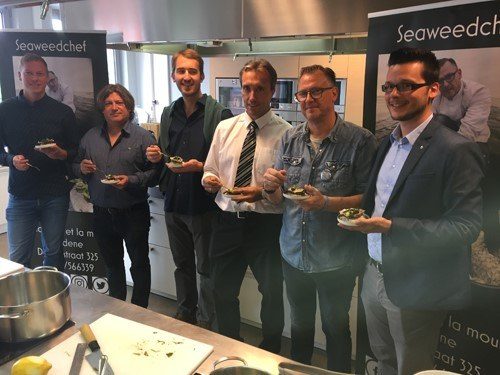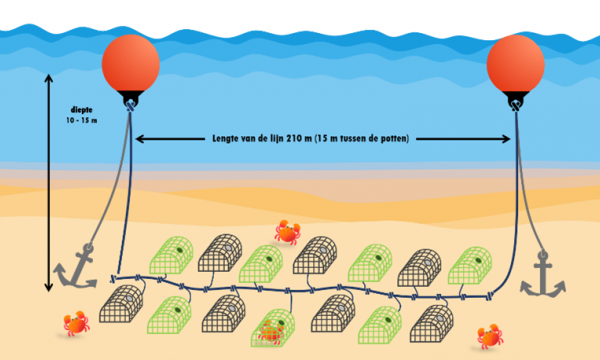Press release First test with Flemish seaweed features interesting tastes and textures

The Flemish “sugar kelp” (Saccharina latissima), a local species of seaweed, seems different from sugar kelp grown in other regions and seas. That is the observation from a culinary test made with the very first harvest of trial-grown seaweed plants from the research project Value@Sea. "The texture is firmer than what we pick at our pilot seaweed farm in Norway. There, the textile cultivation mats where the seaweed grows on are located in sheltered fjords. I am not surprised that exactly the same varieties in the Belgian part of the North Sea produce a more robust end product," says Bert Groenendaal of the textile group Sioen Industries, one of the Value@Sea partners.
Goal: fast results
For the first time, local seaweed farming of sugar kelp and sea lettuce is happening in the Belgian part of the North Sea. This is one research objective of the project Value@Sea.
In this project, several partners, i.e., Sioen Industries (specialized in textiles), Colruyt Group, ILVO (Flanders Research Institute for Agriculture, Fisheries and Food), ship-owner Brevisco and shellfish specialist Lobster Fish bring various types of expertise to the project. In a series of practical experiments they investigate the technical, economic and ecological feasibility of local, integrated marine farming of oysters, scallops and seaweed all on the same site.
Wannes Voorend (Colruyt Group): "Colruyt Group sees an important nutritional and ecological added value in seaweed. Within Value@sea we focus on sustainable, locally grown and balanced food. The dialogue with the consumer becomes important. And the taste. That's why we invited a seaweed chef to judge the first trial harvest during a culinary workshop."
ILVO is focusing on the organic growth process of edible seaweed in the North Sea. The first trial harvest resulted in plants of about 60 cm long. The sugar kelp was sown in mid-November 2017 and placed in the sea. The Value@Sea aquaculture facilities are located 5 km off the coast of Nieuwpoort. "Even so close to shore, the North Sea can be turbulent which can affect the texture of the seaweed," says Daan Delbare from ILVO.
Encouraging results at sea. Promising products on their way
Despite minor plant-related difficulties and the rough conditions at sea, the Value@Sea consortium calls the initial results encouraging. The first real harvest will probably happen next year. The common goal is to develop a scientifically-grounded, economically feasible commercial "seagriculture" and to make seaweed known to the general public.
The first professional judgement about the harvested Flemish seaweed was performed in a test kitchen at Colruyt Groep Academy in Halle. Seaweed chef Donald Deschagt (Le Homard and Moule in Bredene) was invited to be the judge. He prepared a wakame salad using this sugar kelp (Saccharina latissima). The verdict? "The product has excellent features. The taste is salty and nutty, the mouth feel is tender." In short, Deschagt calls it "promising seaweed".



